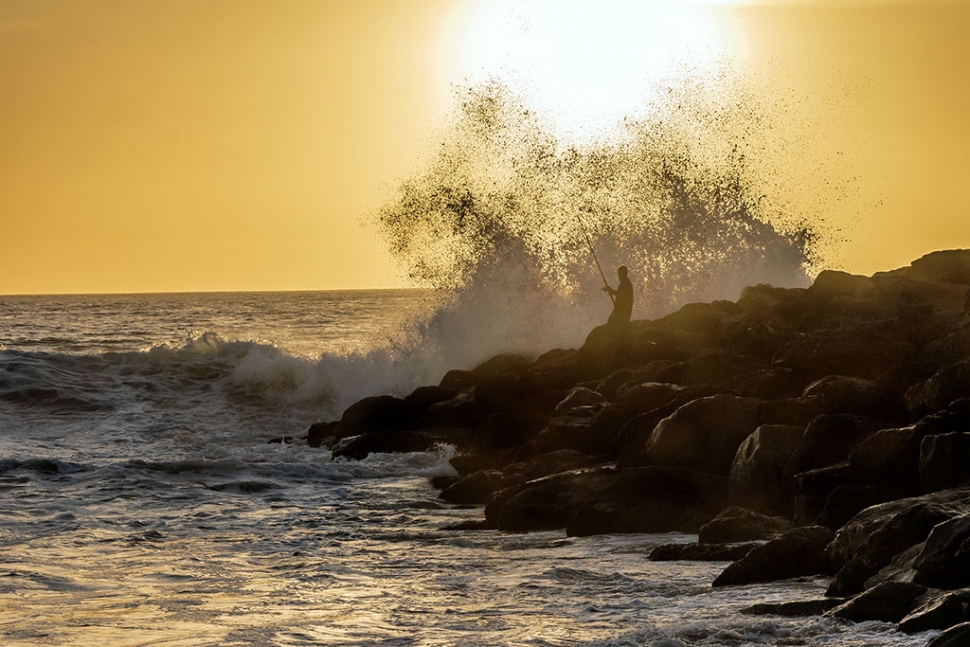|
Focus on Photography
 Photo of the Week "Angler silhouette against a giant smashing wave on the jetty" By Bob Crum. Photo data: Canon 7D MKII camera, ISO 250, Tamron 16-300mm lens @70mm, aperture f/11, 1/1000 shutter speed. By Bob Crum — Wednesday, December 5th, 2018
f/11 and be there!
 Bob Crum You watched the fantabulous Fillmore Christmas parade, didn't you? Sadly, I didn't. First parade I've missed in 15 years! You saw Santa on Fillmore & Western's Santa train didn't you? I didn't. Depressing! To my chagrin, I have both asthma and chronic obstructive pulmonary disease (COPD). Late last Friday afternoon my lungs became extremely congested impacted to the degree that breathing was extremely difficult. I have not been so debilitated in years and to say that it's frustrating is an understatement. When an additional disease invades my lungs, it's like the feeling of suffocation. Rejoice! Even with a very low SpO² (Blood/Oxygen level), I can still write. Last week’s Photo of the Week, the yellow-crested night heron, brought many questions regarding the extremely high ISO. So, why minimal noise visible in the photo? Below you'll see how I deal with excessive image noise. As an analogy, take your hi-fi, if you still have one, and turn up the volume to the max without any music. What you hear is digital noise. Now, you're out with your camera, at sunset and it's getting dark. BTW, I almost always have ISO on auto mode because I would never, in good conscious, manually dial up an ISO of 16000. I know the disastrous result! You see something interesting to photograph - perhaps a rare bird, or a mermaid, also rare! You mash the shutter button. The camera groans as it amplifies the low-light image. In “auto” ISO, the camera takes ISO to the max! BAM! In that amplification process, the digital noise is also amplified... ruining the photo. Or not! Hark! Many times it's salvageable. These days, photo editing software are excellent programs. I use Adobe Lightroom (LR) first to convert the 'raw' file to a graphic image. LR editing options include “Sharpening” and “Noise Reduction.” When done in LR, I export the image to Adobe Photoshop Elements 14 with NIK Plugins. (I rarely use Photoshop) I use NIK's Define as stage 2 noise reduction. If that doesn't work to my satisfaction, my ace in the hole is called Imagenomics Noise Reduction. It's a powerful plugin which means it's just as easy to make matters worse than better thus requires great care when using it. I used it for the bird photo. Watch out for that proverbial fly in the ointment. The more noise reduction that's applied, the greater the loss of detail. It's a balancing act. Eventually, you learn just how far to go with noise reduction and still retain sufficient detail. Without a recent photo for photo of the week, I pulled a favorite from recent archives: The angler on the jetty at sunset. I like it particularly because it allows me to present an important photography adage: 'f/11 and be there!' Be there (anywhere) and many times photo ops magically materialize. As the sun was setting, I walked across the street from Ventura Harbor to the shore. Just curious. Saw the angler. In the background giant waves smashing on the jetty. Still good light with the sun close to the horizon. VOILA! Awesome photo op simply because I showed up. (hint... hint) Get out and shoot! Happy photoing! Send comments, questions or suggestions to: focusonphotography@earthlink.net |
